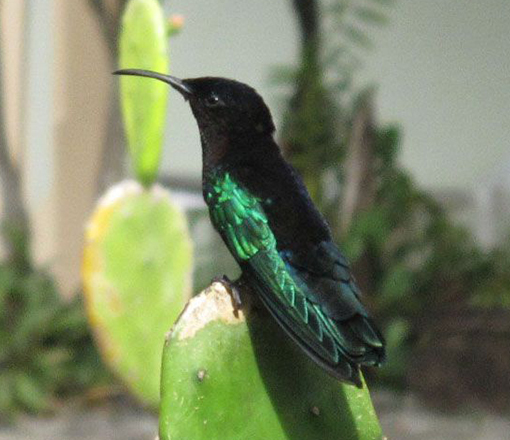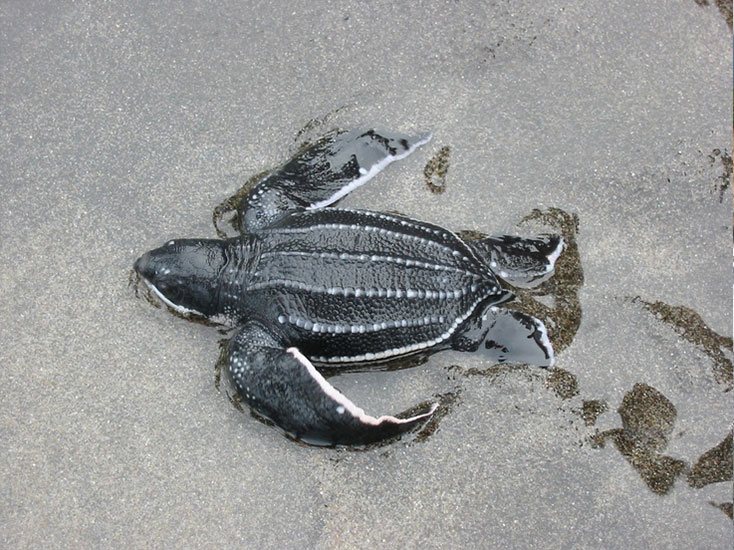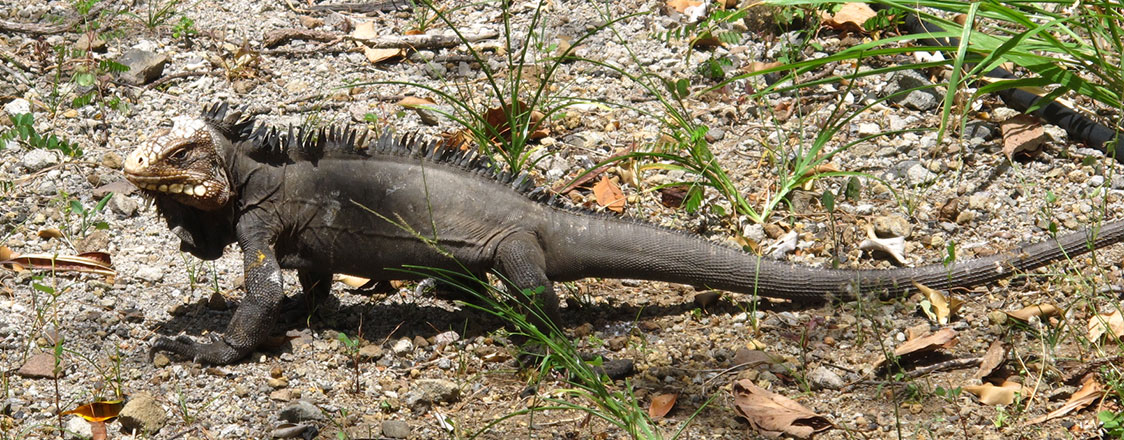The Crapaud, or Mountain Chicken, is one of only four amphibians found in Dominica. Formerly a common sighting, the crapaud population has been in decline since 2002 due to the chytid fungal infection which has made them an endangered species.
Saving the Mountain Chicken Ongoing Research What You Can DoFurther Information
Crapaud in Crisis: Saving the ‘Mountain Chicken’ Frog in Dominica
Where are those Big Frogs?
Most Dominicans will say that it’s been several years since they’ve heard the distinctive mating call of the Crapaud, the local Creole name for ‘Mountain Chicken’ frog (Leptodactylus fallax).
This critically endangered amphibian is a national symbol that appears on Dominica’s Coat of Arms. It’s also one of the largest frogs in the world.
Before 2002, this big frog was a popular local dish and many savoured its chicken-like flavour. Crapaud cuisine was also sought-after by tourists, who were curious to experience its unique taste.
However, within the past decade, it has succumbed to a fungal infection of global epidemic proportions called chytridiomycosis (chytrid). Right now, there are very few surviving in the wild, as it sadly nears extinction on the Nature Island.
The Crapaud is one of only four types of amphibians in Dominica. It is also found on Montserrat. At one time, it did thrive on other islands, but is now extinct. Over-hunting and destruction of habitat are reported to have adversely affected this frog’s population elsewhere.
Fortunately, Dominica’s ‘Mountain Chicken’ has been protected by law for many years. Before the chytrid fungus infestation, the limited hunting season was strictly enforced and there were penalties for catching Crapaud out-of-season.
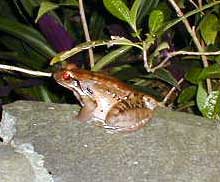
Updates
2015: Encouraging Research Continues on Dominica’s Critically Endangered Frogs (article by Gwenith Whitford)
About Dominica’s Mountain Chicken
The Importance of Amphibians
Scientists assert that ‘Mountain Chickens’ have an important function in Dominica’s eco-system. “Amphibians do more good than people realize,” says Jenny Spencer, a British herpetologist (one who studies amphibians and reptiles). She is assisting Dominica’s Forestry and Wildlife Division as a representative of the Zoological Society of London.
“The ‘Mountain Chicken’ frogs actually do humans a big favour,” she asserts, “They eat many different kinds of invertebrates, such as cockroaches, millipedes, crickets and even small lizards.” According to Ms. Spencer, the chytrid fungus has obliterated various amphibians in other countries. “Some other frogs are extinct because of it. It’s a huge worldwide problem, but research is going on all the time,” she discloses.
The Crapaud Story – Video by ZSL
Dominican poet Delroy N. Williams performs his poem about the plight of the Critically Endangered mountain chicken frog in Dominica. Commissioned as part of ZSL’s outreach work within the local community.
Ongoing Research
Since 2005, an ongoing international collaborative project with Dominica’s Forestry and Wildlife Division continues to actively explore ways and means to protect the Crapaud from the relentless chytrid fungus infestation.
One of the participants is the Zoological Society of London, where researchers are studying ways to reduce the impact of the disease on amphibians in the wild. In Dominica, this fungus is found everywhere in the environment and is also carried by tree frogs which do not appear to be harmed by it.
In Montserrat, where chytrid also destroyed the “Mountain Chicken” population, a recent release of some captive bred animals is underway to find out if this is a reasonable method for preventing the species’ extinction in the wild.
Meanwhile, the Captive Breeding Facility in the Botanical Gardens near Roseau is nearing completion. It will either be stocked with some of the remaining wild ‘Mountain Chickens’ on Dominica before they are wiped out by chytrid, or with captive bred animals, whose parents were rescued and taken to Europe in the face of the epidemic. The Dominican Forestry and Wildlife Division staff is being trained to manage the frogs in captivity, including breeding techniques.
At the present time, Forestry and Wildlife officials are also monitoring areas where the very few ‘Mountain Chicken’ frogs are still found. The establishment of a data- base which documents Crapaud calls and sightings is underway. In addition, bi-monthly surveys of the three species of tree frogs will aid in monitoring population trends. As well, they are being tested for the presence of the chytrid fungus.
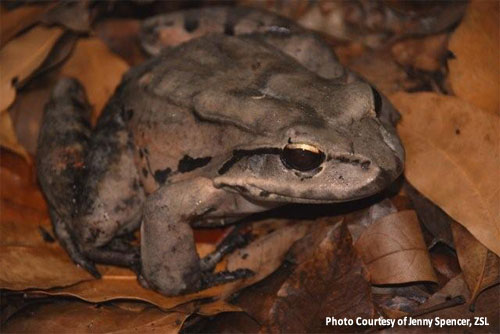
Female Crapaud (Mountain Chicken)
What You Can Do
The public can also play a part in protecting the ‘Mountain Chicken’ frog in Dominica. Everyone is asked to respect the precious Crapaud by not touching, hunting or eating them. Be sure to report any sightings or calls to the Forestry and Wildlife Division (767-266-5852).
With concerted efforts and ongoing research, it is hoped that the majestic ‘Mountain Chicken’ frog will thrive once again.
Further Information
For further information, consult the following web sites:
Copyright 2011 by G.M. Whitford. All Rights Reserved.
Gwenith Whitford is a freelance journalist who resides in the Commonwealth of Dominica, West Indies.
Web site: www.gwenithwhitford.com; Email:gwenithwhitford@hotmail.com
Special thanks to Ms. Jenny Spencer, representative of the Zoological Society of London for her invaluable assistance.

